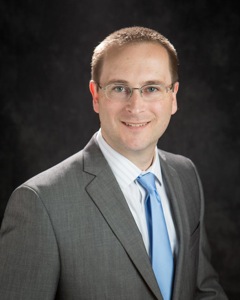Rev. Joshua Martin is a graduate of Westminster Seminary California and an ordained minister of the Orthodox Presbyterian Church. He currently serves as the Pastor of Redeemer Church (OPC) in Santa Maria, CA.
§
Some time ago I picked up the phrase “bad theology leads to bad living.” That is often true. Parents who refuse cancer treatments for their child because they believe that the “prayer of faith” will heal their child, or the man who walks out on his marriage because God revealed to his “inner Spirit Man” that in his case divorce is justified, are two extreme examples.
It is not true, however, to say “good theology leads to good living.” That is an example of bad theology. It is not the case that our behavior is always rational according to our beliefs. Hebrews 3:13 warns us against the “deceitfulness of sin.” Sin is deceptive for many reasons. In some cases we may deceive ourselves into thinking that evil is good and that good is evil. But more often there is complete dissonance between sinful behavior and what we believe to be true. To put it another way: sin is irrational. Sometimes sin is just sin.
Psychologists use the phrase “cognitive dissonance” in part to describe an individual who holds a belief but performs a contradictory action. King David provides us with a tragic Biblical example of this. Cognitive dissonance is what enabled King David to be filled with moral outrage as he listened to Nathan’s tale about a sheep thief (that man must die!), and yet he failed to understand the point of this rather transparent parable: he was that man.
Good theology and good preaching and teaching will not inoculate the Church against sin. Seminary students or young ministers who read this blog should know that there may come a time in your ministry when one of the covenant youth comes up to you after the service and says to you, “Father is a raging alcoholic,” and it will be someone you regarded as a pillar in the congregation. You may get a call at 12:30 AM, and a lady of the congregation will inform you that her husband just walked out of their 30 + year marriage and into the arms of his mistress, and the man in question will be an elder of your session. When this happens you will disbelieve your ears because these accusations will be contrary to everything you thought you knew about this person.
Such sad occasions are reminders for the congregation that in the visible church there are undiscovered tares among the wheat. Occasionally we will discover “Judases” that are insincere in their profession of faith, and will remove them from the Church of Christ. But we will also come across “Peters.” These are true Christians that have been ensnared by the deceitfulness of sin and who may outwardly appear no different than a Judas. The difference is only that God has committed himself to renewing their repentance and restoring them into Christian fellowship.
Finally, the power of sin should remind us that we have an even more powerful savior in Jesus. King David and the Apostle Peter were restored. If you are ensnared in a secret sin, I urge you to repent and come to Christ for forgiveness. For “where sin abounds, there grace superabounds” (Rom 5:20). When a heinous sin becomes public and one is put under the discipline of the church there is a strong temptation to flee from Christ and the church out of sheer embarrassment. Therefore, as Christians we need to continually remind ourselves that God has given the church the Ministry of Reconciliation. It is a place where real sinners find real redemption.
In 1544 Martin Luther wrote a letter to George of Spalt, who was overcome by guilt refused to be consoled by the Gospel of the Grace of Christ. Luther wrote,
My faithful request and admonition is that you join our company and associate with us, who are real, great, and hard-boiled sinners! You must by no means make Christ to seem petty and trivial to us—as though He could be our Helper only when we want to be rid from imaginary, nominal, and childish sins. No, no! That would not be good for us. Christ must rather be a Savior and Redeemer from real, great, grievous and damnable transgressions and iniquities—yes, from the very greatest and most shocking sins…
One time Dr. Staupitz comforted me …He said to me: ‘Aha! You want to be a painted sinner, and accordingly, expect to have in Christ a painted Savior! You will have to get used to the belief that Christ is a real Savior and that you are a real sinner! For God is neither jesting nor dealing in imaginary affairs, but He was greatly and most assuredly in earnest when He sent His own Son into the world and sacrificed Him for our sakes.
Indeed, we are not “painted” sinners and Christ is not a “painted” savior and he is more than able to rescue us from the deceitfulness of sin.


Very much needed!
A huge blind spot for worldviewry.
Fascinating insight, through Staupitz, that first Luther could only see his painted sins and groaned, but later saw more of his real sin and could rejoice in God his Savior. Reminds me of the pain until the boil is burst.